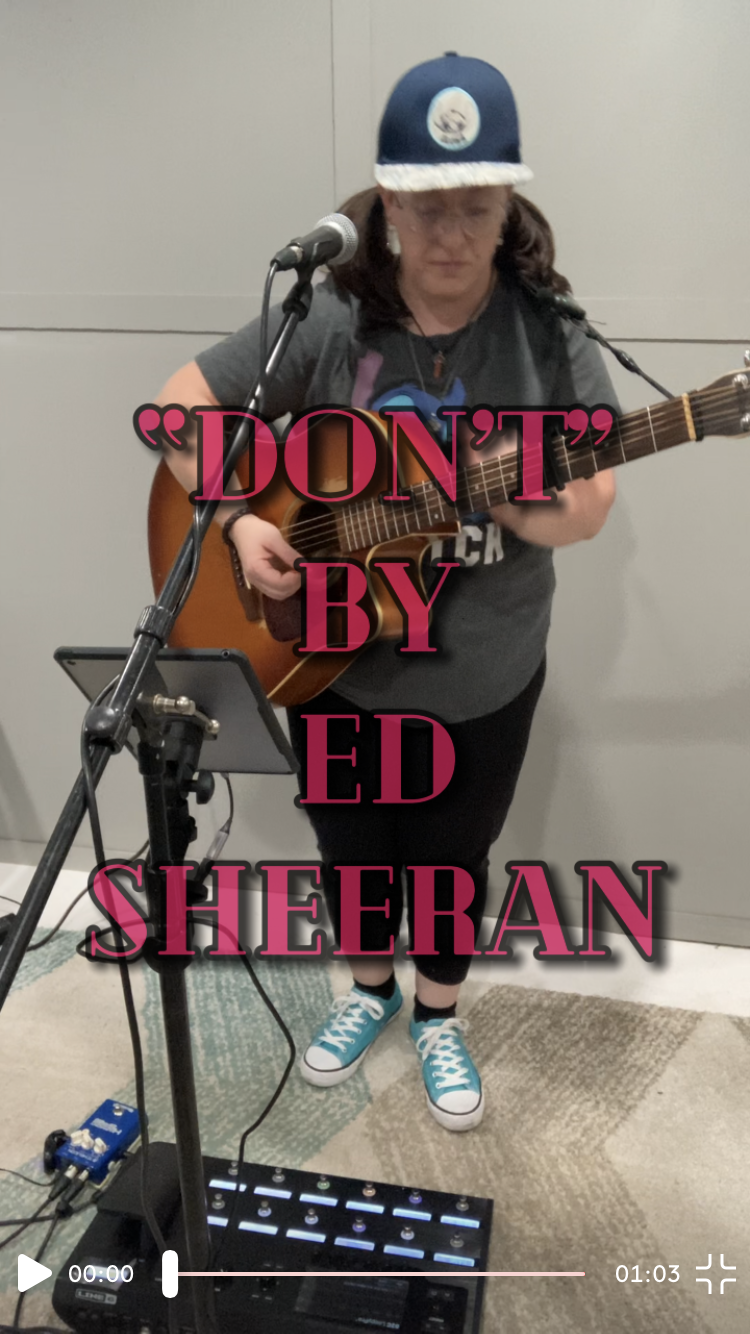Live Looping Part 2: Ed Sheeran’s “Don’t”
In my last loop video, I showed you the basics to setting up a looper, and the beginning beats that you can begin to use.
In this loop video, I want to discuss where to start with a song, and how to choose the order of your loops. IN A LIVE PERFORMANCE THIS IS VERY IMPORTANT. A common thing I see happen is that loop artists start of by building a beat, and then layering guitars and vocals. Not that this is a bad thing, but if this is the constant order, then the set becomes boring and repetitive. (Something your shows should NEVER be.) Make sure that you throw in songs that have minimal looping, or practice different ways to start off a loop.
In this video, I went back to basics with the Godfather of looping, Ed Sheeran. I did a basic loop order of Ed’s song “Don’t”.
Loop 1: The Guitar Part
The basic chord structure is Ami, F, G, Ami. (I threw a capo on this because that’s typically where I sing the song. Transpose this song to any key you choose.) If the rhythm I use is too complex, then make it easier on yourself, and just stick to something you can handle.
Loop 2: The Beatbox
If you’re still new to looping, then stick with using the “boots and cats” beat. Just remember that it is the hard plosives and consonants that you want to focus on, while leaving out all of the vowel sounds.
Loop 3 (If Applicable): The Bass
If you have an octave effect pedal in your arsenal, it can be SUUUUPER exciting to fill out all of the low end frequencies that your beatboxing can’t hit. This is really effective making the entire production of looping come to life. You don’t even have to do anything crazy, you can stick to the root notes and add a cute little rhythm to it to spice it up.
Lastly, the guitar solo tone:
One of the things I get complimented on consistently is that I have a great electric tone coming out of my acoustic. This takes some time and practice to develop. You have to find effects that partner well with your guitar. I have found that starting with the guitar tone first, and then adding the right effects later is always paramount. Just like electric players know that your guitar AMP is what actually drives the real tone of your guitar, an acoustic player knows that the wood composition will tell you a lot about how a guitar will resonate with effects added to it. In my humble opinion. darker woods lend themselves better to layered effects. They don’t push out as many bright frequencies as like a spruce or koa top, therefore when you add an effect that might brighten your tone, you don’t have frequencies screaming bloody murder at you.
Hopefully this has shed some light on how to layer your loops! Good luck, happy looping, and hit me up with any questions at info@musiconthemovestudios.com!


